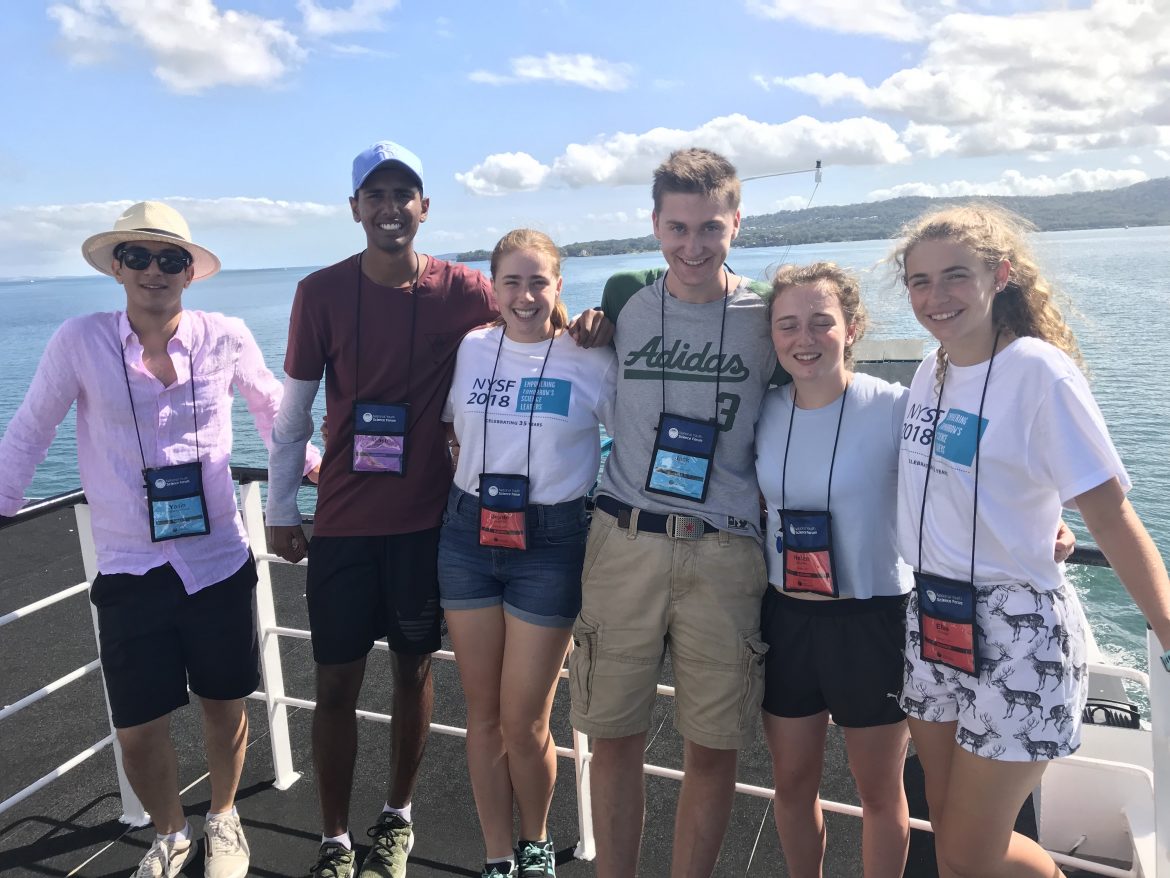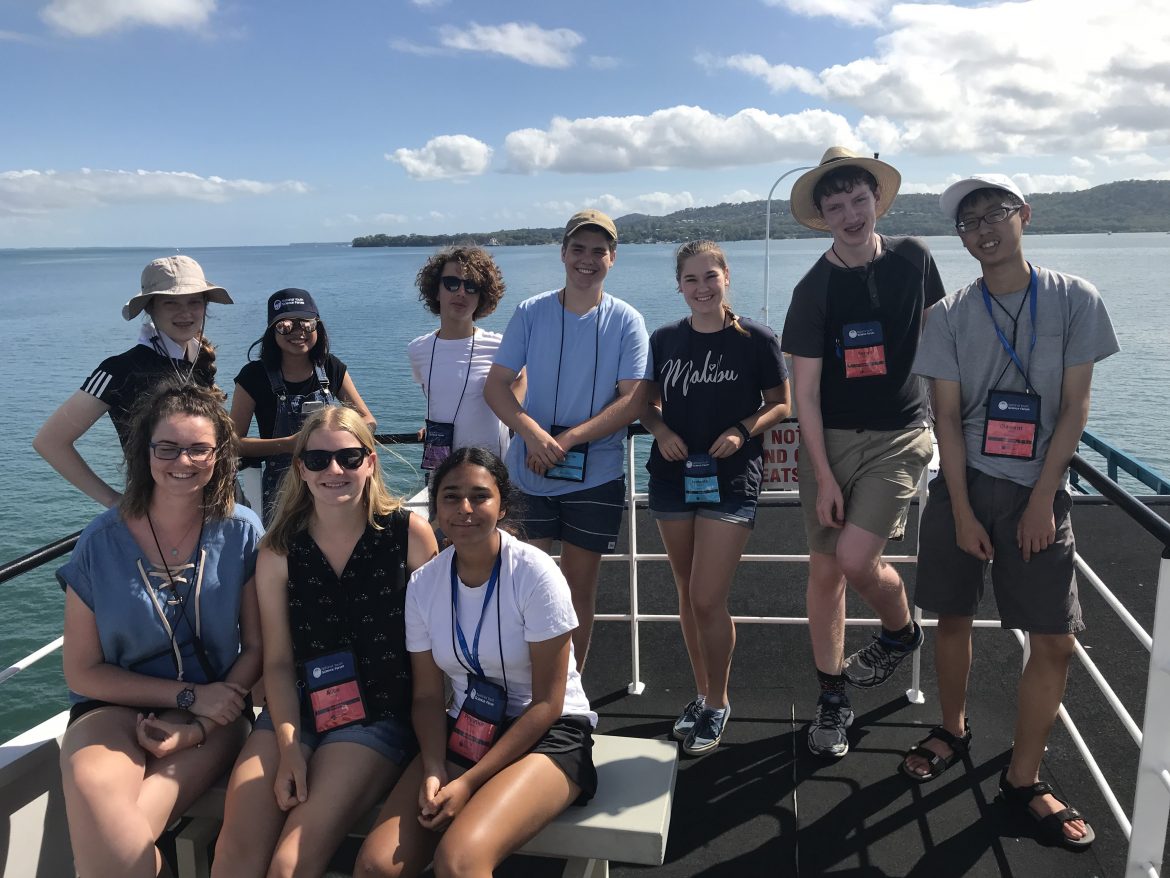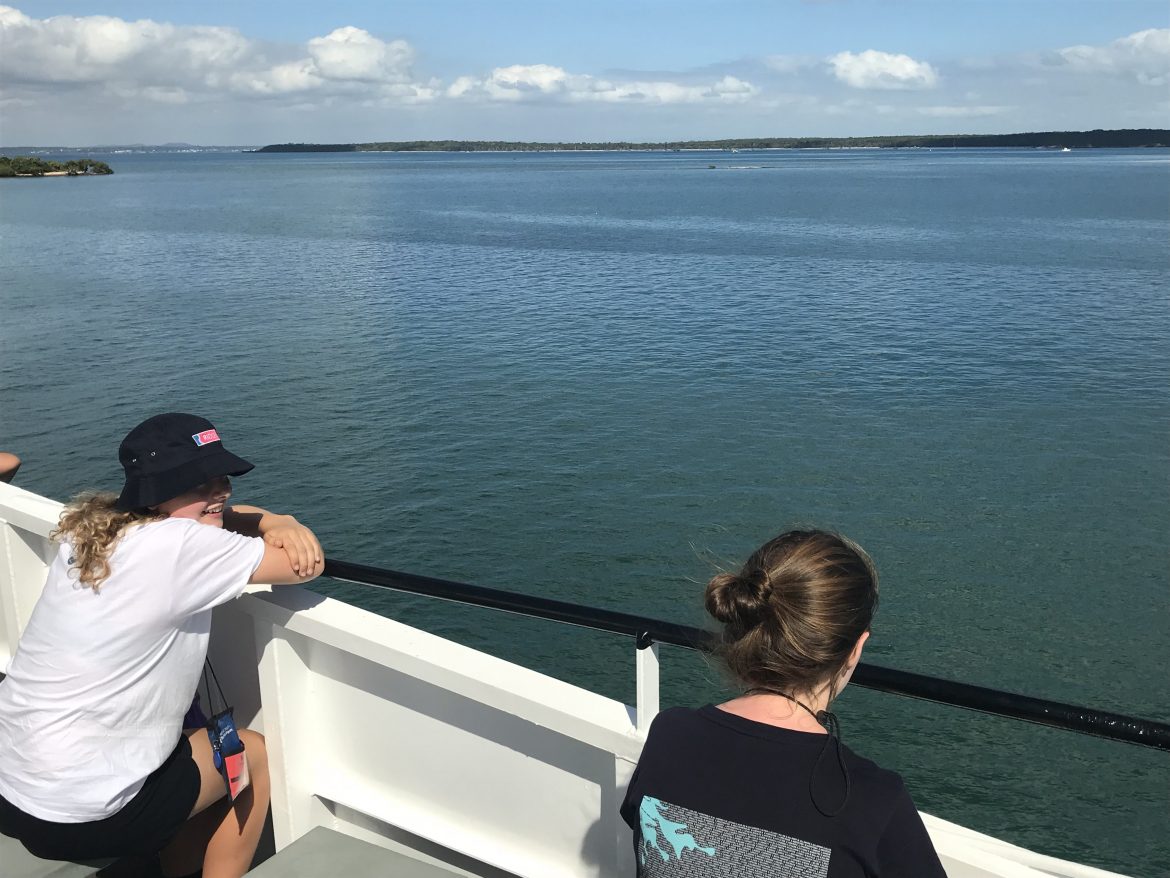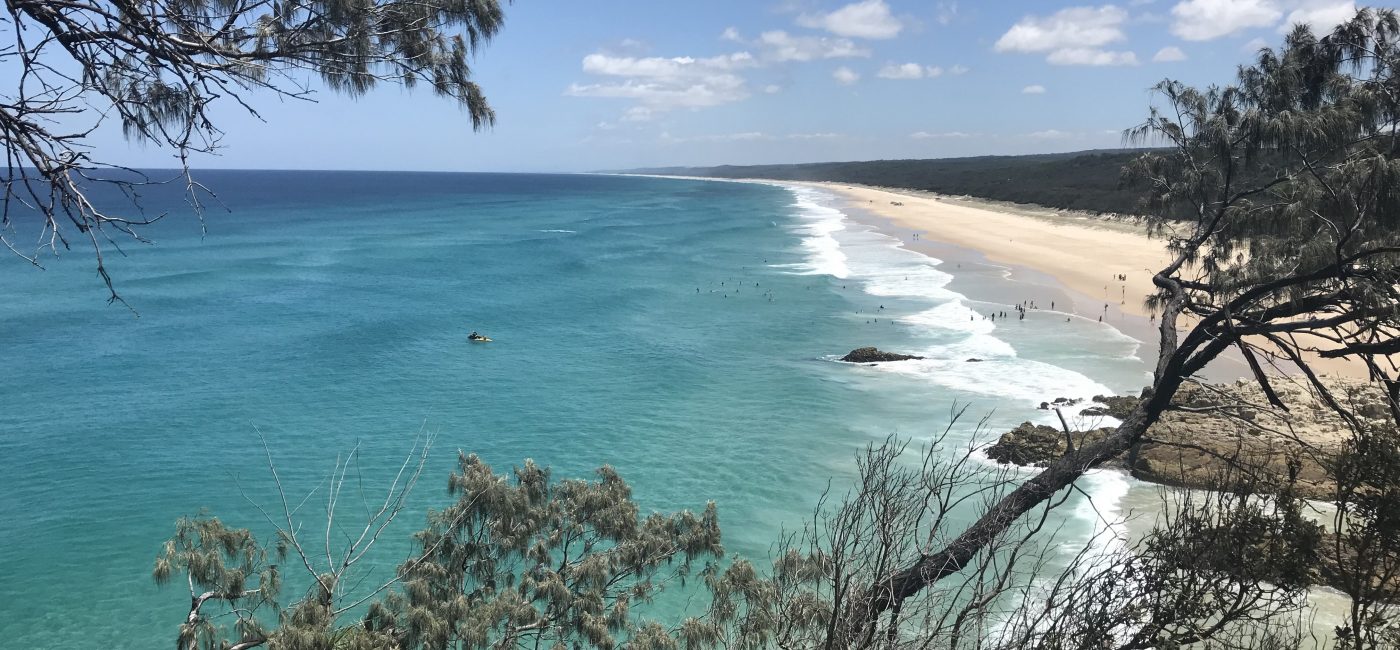
The first day of STEM visits in the first ever Brisbane program included a boat road to Moreton Bay to visit the unique ecosystem studied by UQ's Moreton Bay Research Centre
You haven't accidentally clicked on a Queensland Tourism advertisement, this really is one of the full day STEM visits in the first ever Brisbane program of the NYSF 2018 Session B. The Carson, Darwin and Hill groups boarded a ferry to Moreton Bay Research Station (MBRS), part of The University of Queensland (UQ) and located on Minjerribah (North Stradbroke Island). These interest groups are about Sustainability, Ecology and Environment with Hill focused on Biology (Botany, Zoology, Evolution, Micro, Molecular, Genetics).
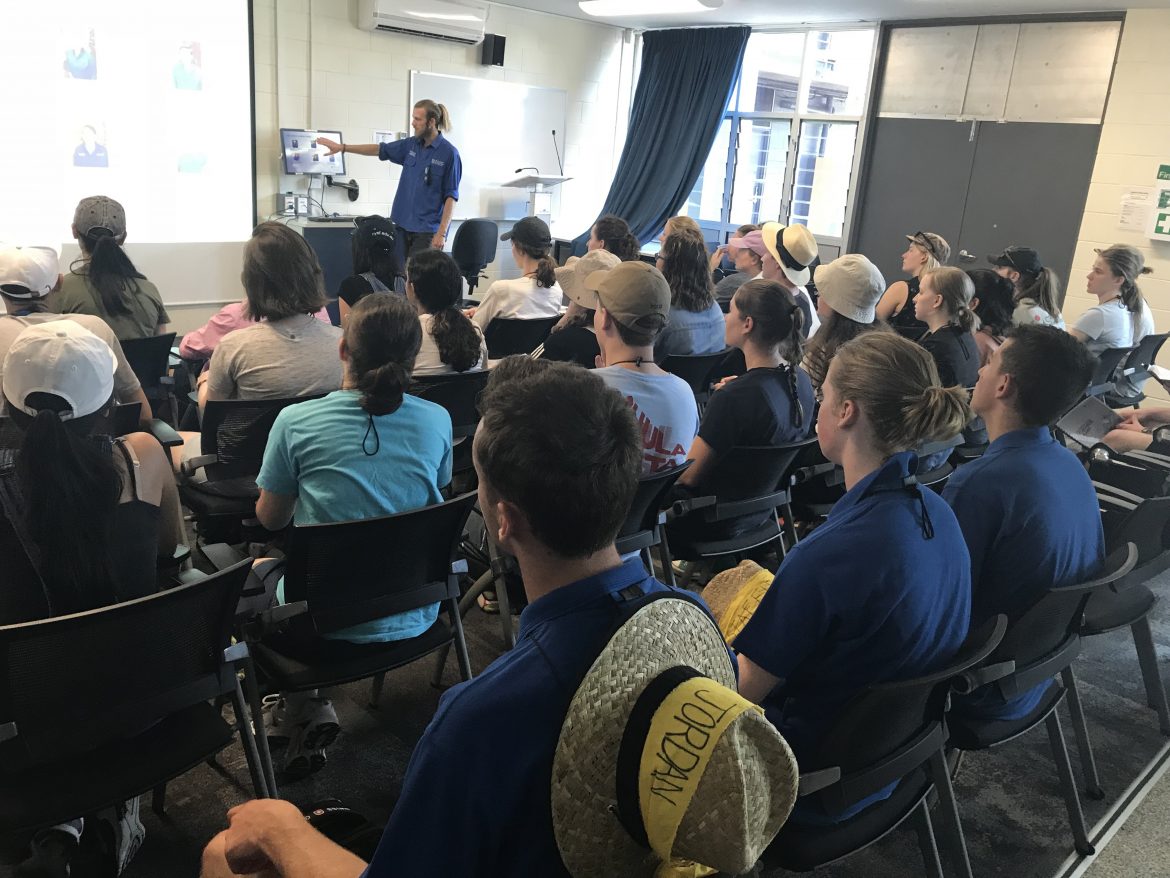
The group of 45 students led by 3 MBRS staff Scott, Carl and Cedric, explored the high energy coastline (Deadmans Beach), walked a gorge (Point Lookout - Terran-gee) and saw dolphins, turtles and an eagle ray. The importance of protecting the coastline and managing the ecosystem were illustrated through activities that involved understanding the ‘zonation’ present along the coastline by conducting quadrants and transects along a segment of shore. Students learned terms like ‘biotic’ and ‘abiotic’, determining which were present while also looking for adaptations of different organisms to understand how they survive.
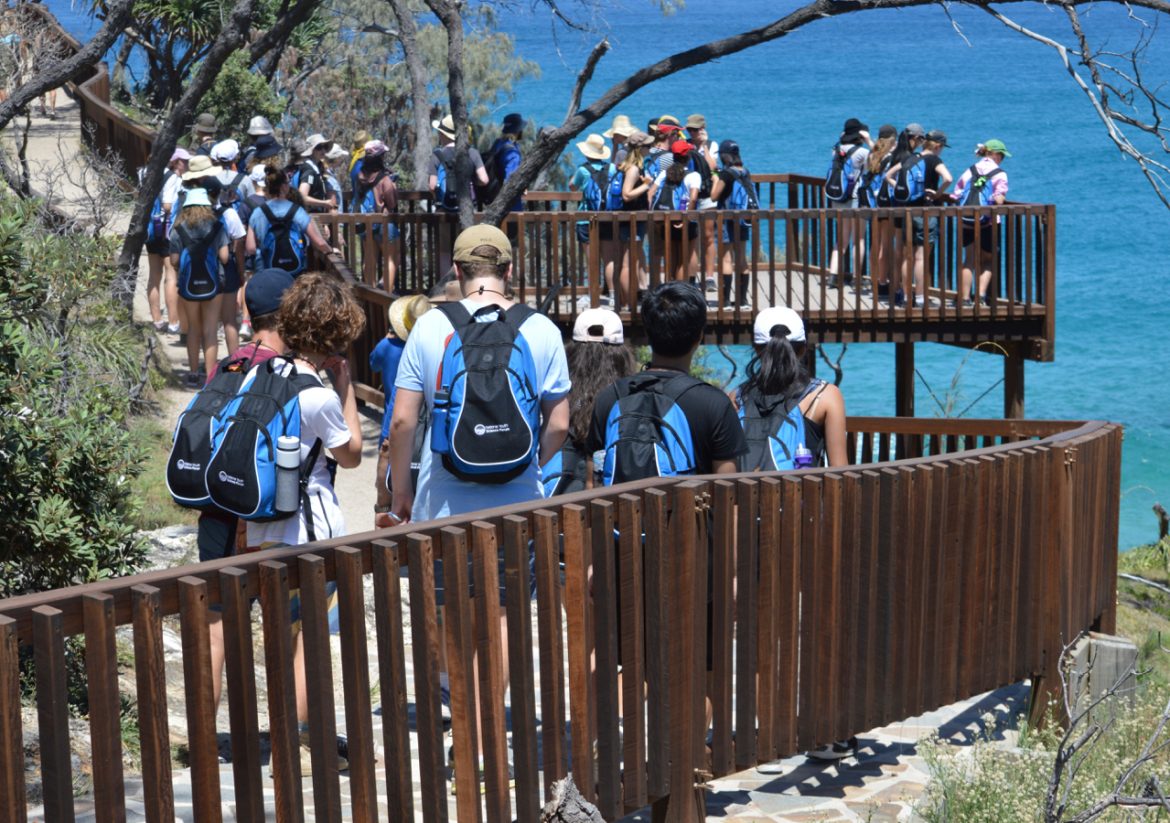
It wasn’t just a day of walking around the beautiful coastline of Minjerribah.
There were workbooks.
Science is the process of understanding things, in this case, marine biology - and that requires a lot of observation and data recording. Students were required to log sightings of marine mammals by noting the time, date, location, species and identifying features along with unique behaviours, sea conditions, weather and other nearby animals. Another exercise involved behaviour observations, creating an Ethogram - a detailed recording of behaviours including a drawing, description and a name for the behaviour.
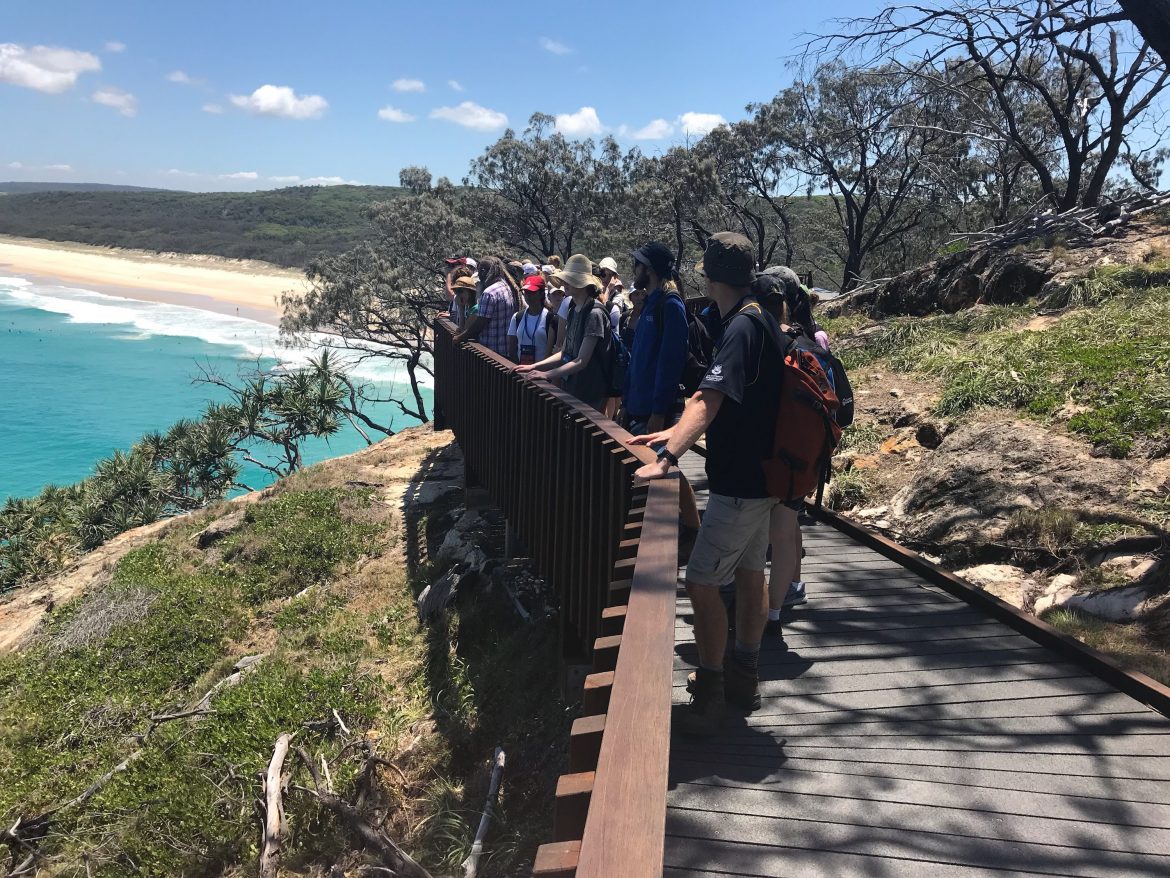
The photos, taken by communications intern, Carl, show a beautiful sandy beach with bright blue water, but the students were working hard measuring and recording in the extreme heat. Weather on the day was beautiful, but topped 35 degrees meaning the students got exposure to some of the challenges in the field of Marine Science and Biology. Hats, sunscreen, and lots of water are essential for a full day of sweaty beach science!
There’s also mud.
Moving to the low energy coastline for the next activity, the students learned about the importance of mangroves to an ecosystem. They can survive salt water by pumping salt into their leaves which turn red and are later dropped. We learned that the roots stick out above the ground because sand is too dense for oxygen penetration like normal soil. For this activity, students were required to:
- identify and become familiar with the different animals and plants found in mangrove ecosystems
- investigate the natural processes and physical factors influencing a mangrove forest
- to identify adaptations in organisms living in mangroves
- to assess the potential impacts of humans on the mangrove ecosystem.
To complete the activity students walked from the rainforest to the sea, along a mangrove creek at Mycra Springs which runs through a rainforest and out to a seagrass meadow. There, they observed - , the first step in environmental science - and make qualitative assessments of the mangrove ecosystem.
Exhausted from a full day of being marine biologists, the groups headed back to Brisbane via the barge. Time for a few photos with new friends…
